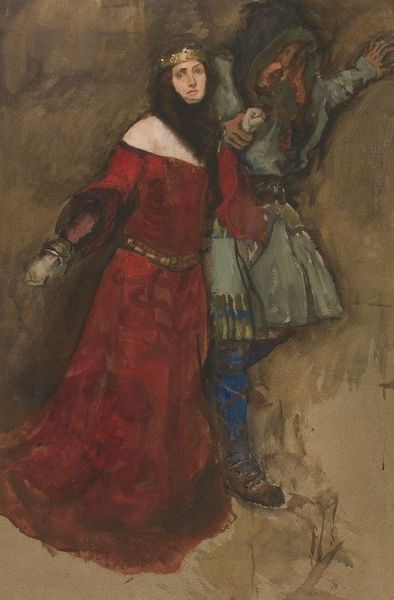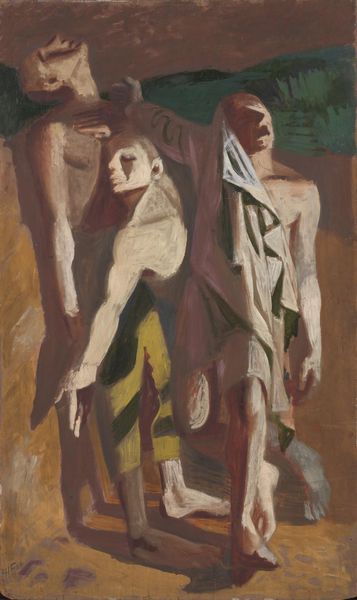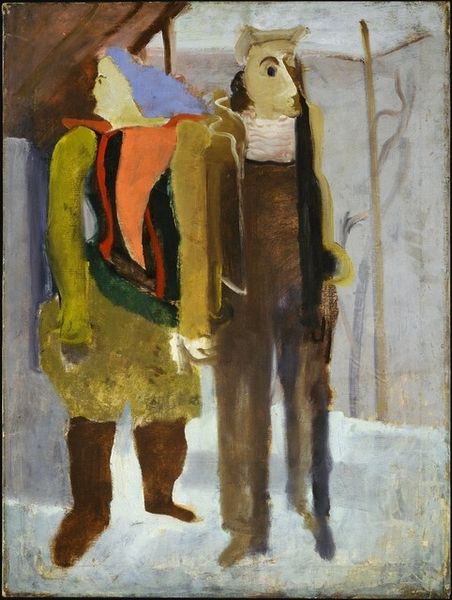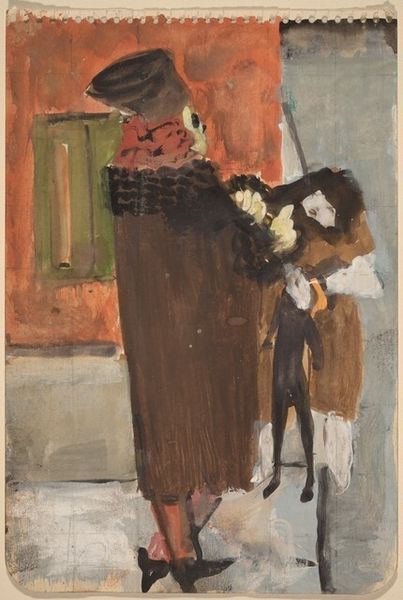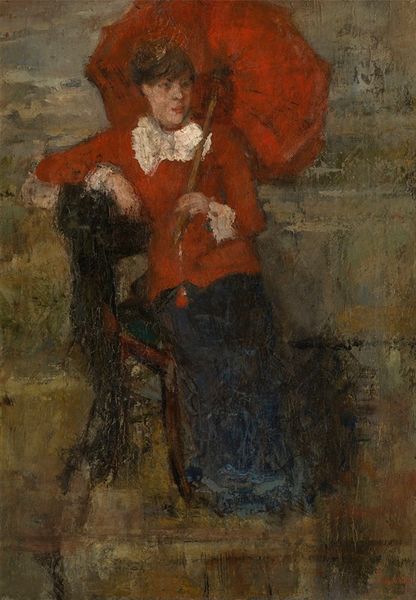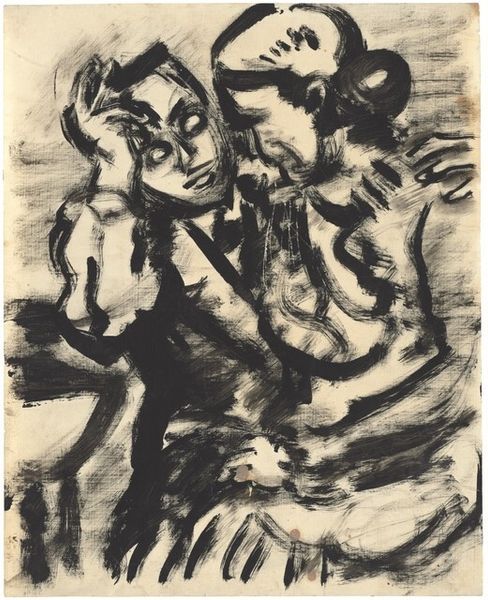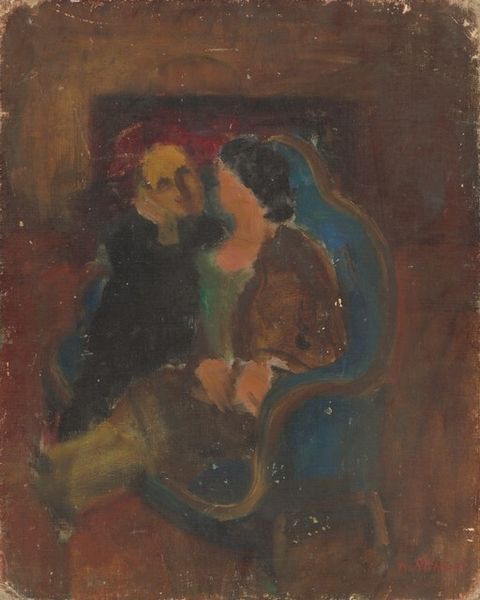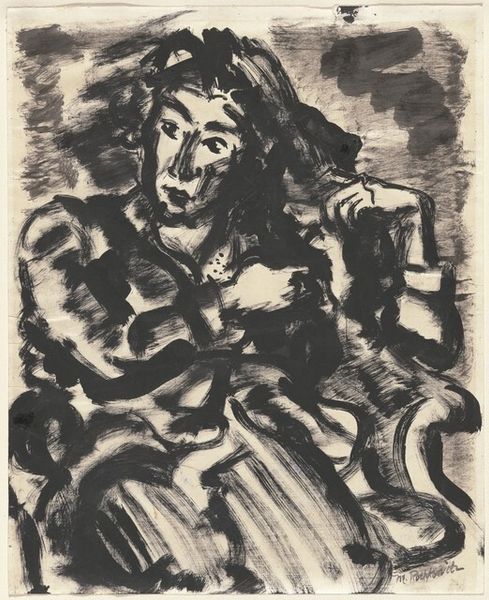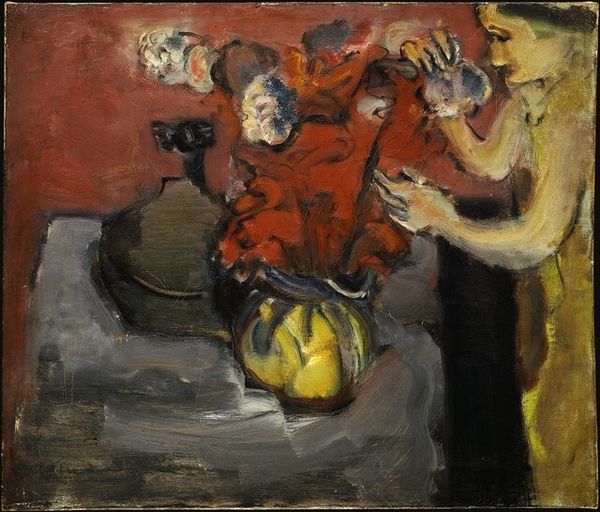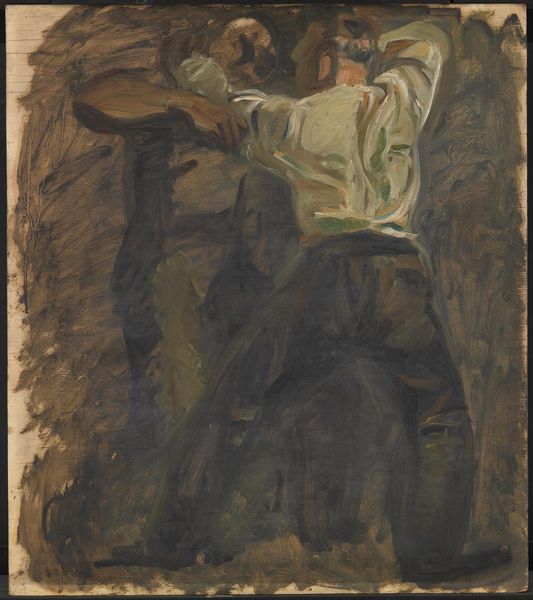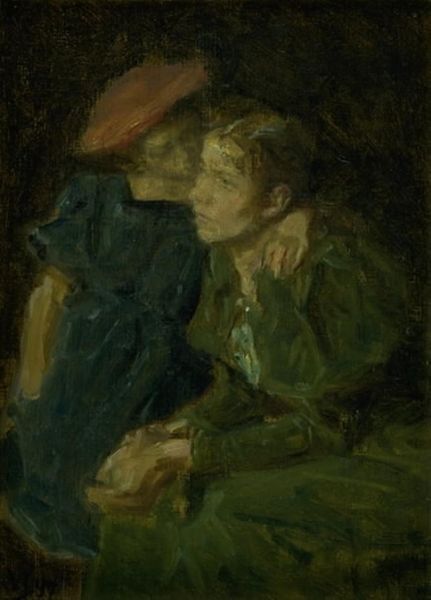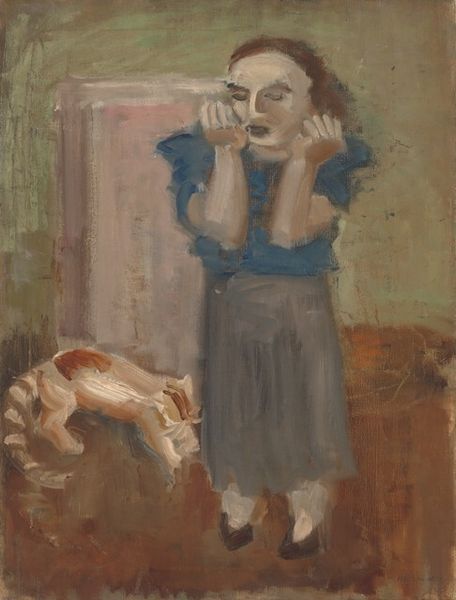
Dimensions: overall: 79.7 x 59.7 cm (31 3/8 x 23 1/2 in.) framed: 89.9 x 70.2 x 8.7 cm (35 3/8 x 27 5/8 x 3 7/16 in.)
Copyright: National Gallery of Art: CC0 1.0
Curator: Here we have Mark Rothko’s "Untitled (two seated women)," an oil painting dating from around 1934. Editor: Oh, it's immediately unsettling, isn’t it? These two women...there’s a fragility there, but also this kind of awkward stillness, as if they’ve been caught mid-sentence, or perhaps they're waiting for something ominous to occur. Curator: Well, this piece comes from Rothko's early period, before he moved toward the abstract style he’s best known for. He was painting cityscapes and figural works at the time, often depicting isolated individuals or small groups within urban environments. There are hints of Expressionism there, wouldn't you say? Editor: Yes, that distorted figuration gives it an edge! Those heavy lines and muddy colors contribute to the oppressive mood. The woman in red... there's a vulnerability in her posture, the way she folds into herself. And her gaze avoids something or someone… the other woman looks far beyond. What do you make of the contrast of color choices? Curator: The dark tones and somewhat claustrophobic arrangement certainly reflect the social anxieties of the Depression era. Rothko and many other artists in New York sought to capture the psychological atmosphere through distortion, unconventional perspective, and emotional coloring, to reflect, perhaps, the suffering in daily lives. Editor: Suffering, yes. But there's also something theatrical here. Like they are on a stage, these characters are posed and slightly grotesque, in an almost carnivalesque sense. That rough paint handling! Curator: His engagement with figuration from the early to mid 1930s explores a sense of alienation but it prefigures, in a way, his later explorations with pure form. This earlier period wasn’t as well received and as well known in the United States, although today, early work is viewed with much interest in social context and as a reference to modern themes in Rothko’s artistic biography. Editor: Well, now I feel a little less disturbed but also a little more intrigued. Maybe this awkwardness is an honest window into a specific moment. A very raw look, actually! Curator: Perhaps the work reminds us of a period in social history we ought not to forget, while Rothko tried his best to translate feeling and understanding into forms of figurative art.
Comments
No comments
Be the first to comment and join the conversation on the ultimate creative platform.
